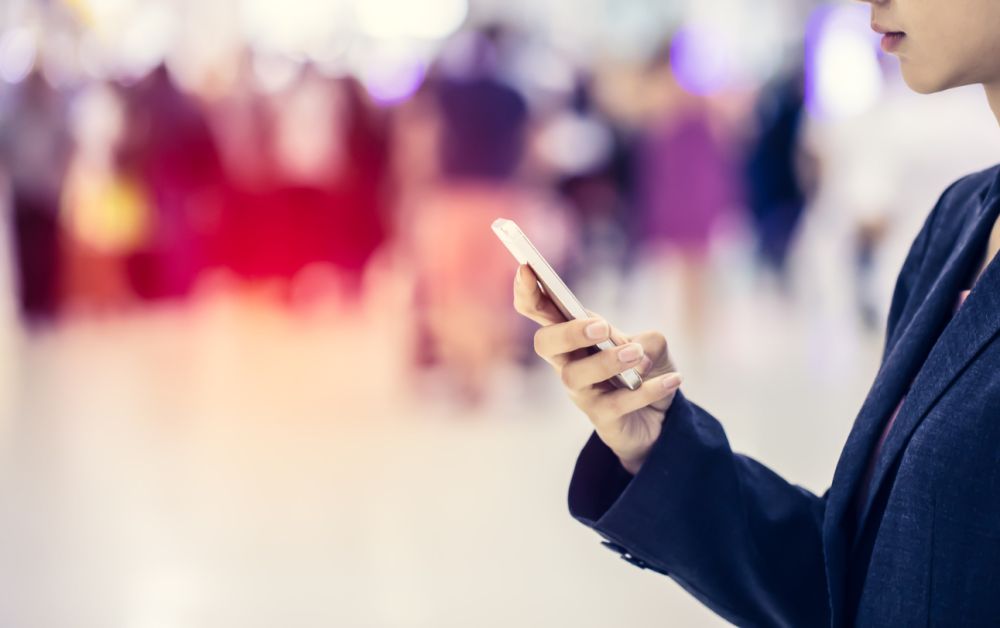
Indoor navigation has long been a challenge in complex environments such as shopping malls, airports, hospitals, and large office buildings. Ultra-wideband (UWB) technology is now redefining wayfinding by offering high-precision, scalable, and privacy-focused solutions with low latency and high reliability for indoor applications. This improves the overall user experience on top of known solutions based on Wi-Fi and Bluetooth® Low Energy.
The Technology Behind UWB Untracked Indoor Navigation
A key technology enabling UWB-based untracked indoor navigation is FiRa’s Downlink Time Difference of Arrival (DL-TDoA) feature. In this approach, an infrastructure of anchors periodically exchanges UWB messages. The UWB-enabled mobile device (UMD), such as a smartphone or wearable, can determine its own location simply by receiving signals from this infrastructure.
Since calculation of the location does not require the UMD to transmit any UWB signal, it is not trackable, thus enhancing privacy. As a result, the user can decide if and when the location should be shared with any third-party systems.
Scalability and Deployment in Complex Spaces
With the synchronization features standardized in the FiRa specification, installing infrastructure, even in large and complex buildings, becomes seamless. Furthermore, UWB communication based on DL-TDoA supports the scalable operation of an unlimited number UMDs, regardless of the infrastructure size. This scalability not only streamlines deployments, but also optimizes cost and complexity, making it an ideal solution for high traffic environments such as airports, shopping malls, and museums.
Why UWB is Ideal for Complex Environments
- Centimeter-Level Accuracy: UWB delivers precise navigation, enabling users to find exact locations, such as the right product on a store shelf, the right picture in an art gallery, or the right door in an unknow environment.
- Robustness in crowded environments: The underlying Time-of-Flight (ToF) technology (How UWB Works | FiRa Consortium) in combination with multi-path detection offers improved positioning results compared to RSSI based approaches.
- Low Latency for Real-Time Positioning: With UWB-based positioning data updating multiple times per second, it is perfectly suited for dynamic environments where users are constantly on the move, such as airports, event venues, and shopping malls.
- Energy Efficiency: A UMD leveraging the synchronized infrastructure implementing FiRa specifications can optimize its power consumption while navigating – an essential advantage for battery-powered wearables and smartphones.
Diverse Applications of UWB Navigation
The benefits of untracked indoor navigation extend beyond standard navigation:
- Airports & Transportation Hubs: UWB guides travelers efficiently through terminals, helping them find the fastest security lane or the quickest route to their boarding gate.
- Retail & Shopping Centers: Customers can locate specific products on store shelves, improving their shopping experience and reduce time spent searching.
- Healthcare Facilities: Hospitals can integrate UWB to assist patients and visitors in navigating large medical complexes.
- Accessibility Solutions: UWB navigation supports people with disabilities, offering precise, audio-guided directions for visually impaired individuals.
- Smart Buildings & Offices: UWB enhances navigation in large office spaces and enables better space utilization.
The Future of UWB in Indoor Navigation
UWB technology is rapidly expanding and transforming industries. Its integration into consumer devices is accelerating. Many smartphones and upcoming wearables include UWB chips, paving the way for seamless adoption of UWB-powered navigation in public and private spaces. With its unmatched precision, scalability, and privacy-first approach, UWB is set to revolutionizes the way people navigate in buildings. Untracked indoor navigation additionally opens the way for broader field of use-cases. As UWB adoption accelerates, its impact on indoor navigation will continue to grow, unlocking new possibilities for seamless, intuitive, and efficient experiences in a wide range of environments.